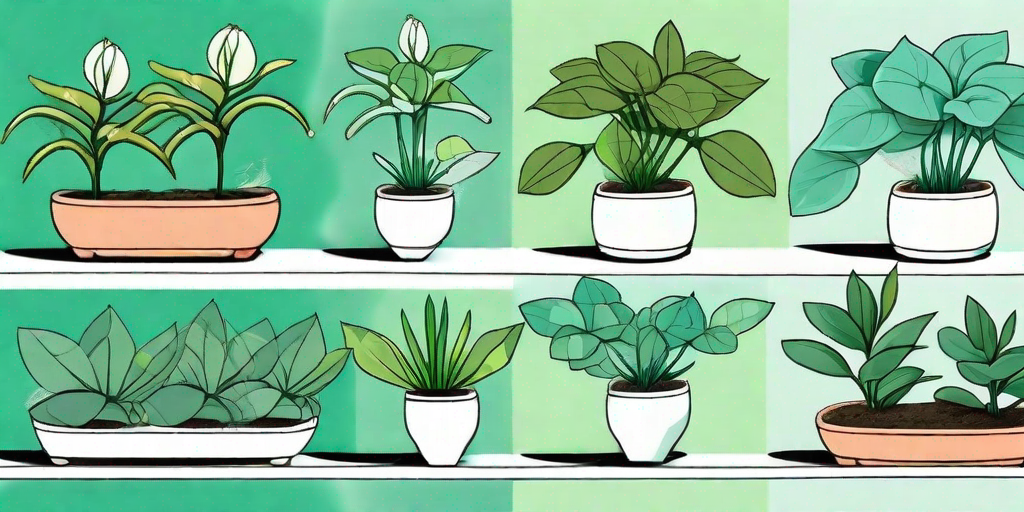
Ah, Hoyas. Those charming, waxy-leaved wonders that have taken the houseplant world by storm. If you're reading this, chances are you've already fallen under their spell. And who could blame you? With their stunning foliage and sweet-smelling blooms, they're practically irresistible. But what if I told you that you could have more? A lot more. An army, even. Well, buckle up, buttercup, because we're about to dive into the wonderful world of Hoya propagation.
Understanding Hoya Propagation
Before we start amassing our Hoya troops, let's take a moment to understand what propagation actually is. In the simplest terms, propagation is the process of creating new plants from the parts of existing ones. It's like cloning, but without the creepy lab and mad scientist vibes. For Hoyas, this usually involves taking stem cuttings, but more on that later.
Now, you might be wondering why you'd want to go through the trouble of propagating when you could just buy more plants. Well, aside from the fact that it's cheaper (and who doesn't love saving a few bucks?), propagation is also incredibly rewarding. There's something truly magical about watching a tiny cutting grow into a full-fledged plant. Plus, it's a great way to share your love of Hoyas with friends and family. After all, who wouldn't want a piece of your Hoya army?
Choosing the Right Hoya for Propagation
Not all Hoyas are created equal when it comes to propagation. Some species are more willing to root than others, making them ideal candidates for your propagation efforts. Hoya carnosa, Hoya pubicalyx, and Hoya australis are all known for their propagation prowess. But don't let that discourage you from trying with other species. After all, where's the fun in an army that's all the same?
When selecting a Hoya for propagation, look for healthy, mature plants with plenty of new growth. Avoid plants that are flowering, as they're likely to be more focused on producing blooms than roots. And remember, the healthier the parent plant, the better chance your cuttings have of success. So treat your Hoyas well, and they'll reward you with plenty of recruits for your army.
How to Propagate Hoyas
Step 1: Taking Cuttings
The first step in propagating Hoyas is taking cuttings. This might sound intimidating, but it's actually quite simple. All you need is a sharp, clean pair of scissors or a knife, and a healthy Hoya plant. Look for a stem with at least two nodes (the bumps where leaves grow), and make a clean cut just below a node. Congratulations, you've just taken your first Hoya cutting!
Once you've taken your cutting, remove the lower leaves to expose the nodes. These nodes are where the new roots will form, so it's important to give them plenty of room to grow. Be gentle, though. Hoyas are tough, but they're not invincible.
Step 2: Rooting Your Cuttings
Now that you have your cuttings, it's time to get them rooted. There are several ways to do this, but the most popular methods involve either water or soil. Water propagation is exactly what it sounds like: you place your cuttings in a container of water and wait for roots to form. It's simple, effective, and lets you watch the rooting process in action.
Soil propagation, on the other hand, involves planting your cuttings directly in a well-draining potting mix. This method is a bit more hands-off, but it can be more successful in the long run, as it eliminates the need to transition the cuttings from water to soil. Whichever method you choose, be sure to keep your cuttings in a warm, bright spot, but out of direct sunlight. And remember, patience is key. Rooting can take several weeks, so don't despair if you don't see progress right away.
Caring for Your New Hoya Plants
Once your cuttings have rooted, it's time to treat them like the tiny plants they are. This means giving them plenty of light, but not too much direct sun, and watering them when the top inch of soil is dry. Be careful not to overwater, though. Hoyas are succulent-like in their watering needs, and too much moisture can lead to root rot.
As your new Hoyas grow, you might need to provide some support in the form of a trellis or stake. Hoyas are natural climbers, and they'll appreciate something to cling to. Plus, it'll help keep your Hoya army in line. Can't have them staging a coup, now can we?
Frequently Asked Questions
Can I propagate Hoyas in water?
Absolutely! Water propagation is a popular method for rooting Hoya cuttings. Just be sure to change the water regularly to prevent bacteria build-up.
How long does it take for Hoya cuttings to root?
Patience, grasshopper. Rooting can take anywhere from a few weeks to a few months, depending on the species and conditions. Just keep an eye on your cuttings, and before you know it, you'll start seeing those precious little roots.
Can I propagate Hoyas from leaves?
While it's technically possible to propagate Hoyas from leaf cuttings, it's much more difficult and less reliable than stem cuttings. Stick with stems for the best results.
Conclusion
And there you have it, folks. The foolproof guide to propagating Hoyas. With a little patience and a lot of love, you'll be well on your way to growing your own Hoya army. So what are you waiting for? Get out there and start propagating!















